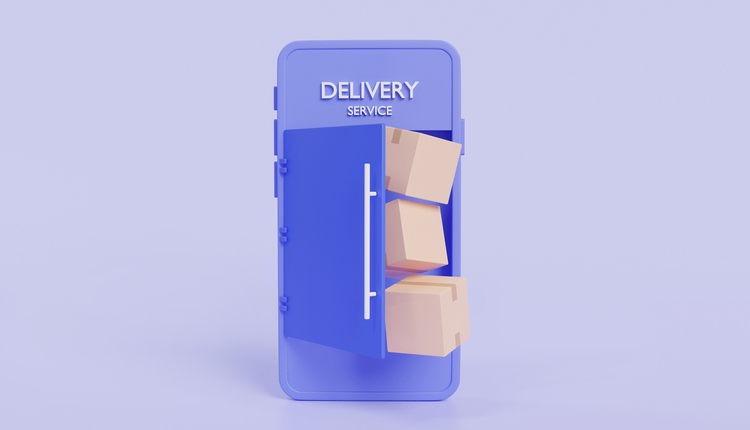The three big US couriers — FedEx, UPS, and USPS — offer similar services, but there are key differences between the specifics of those services.
FedEx, UPS, and USPS have three different sets of policies on hazardous materials shipping. While the companies all follow federal regulations on dangerous goods, the requirements they have for customers differ significantly.
What Can You (Not) Ship in the Mail?
Exact hazardous materials shipping policies vary from courier to courier, but all three couriers follow federal regulations on shipping hazardous goods.
These regulations are primarily located in the Code of Federal Regulations Title 49 for Transportation (CFR Title 49), which outlines DOT and Homeland Security standards on transportation and transportation security.
The shipping of both hazardous materials — which pose risks even when not in transportation — and dangerous goods — which pose risks when transported — are regulated in this Title.
Hazardous materials and dangerous goods may be considered separate categories or effectively interchangeable depending on courier.
In any case, the DOT’s Dangerous Goods classifications system is a useful tool for predicting the difficulty of shipping both dangerous goods and hazardous materials. For example, see this list of goods that the USPS will not ship, from the service’s website:
●Air bags
●Ammunition
●Explosives
●Gasoline
●Marijuana (medical or otherwise, with exceptions for hemp and CBD products)
The first three items are examples of Department of Transportation Class 1 “Dangerous Goods.” These are substances designed to function by explosion. The fourth is a flammable liquid, a Class 3 good, while the fifth is prohibited due to marijuana’s current federal legal status.
All goods classified under one of the nine Dangerous Goods classes can be challenging to ship, but explosives can be extremely difficult to transport and will likely require special consideration and preparation on the part of the shipper.
Many other goods also fall under the DOT Dangerous Goods classification system — including seemingly innocuous products like fish oil, hair spray, paints, resins, and activated charcoal.
It is possible to ship any of these items in the US, but the process is often much more involved than it would be when shipping non-dangerous goods. Failing to follow the right procedures could put the shipper or the business at serious risk.
These goods may also be Limited Quantities or Excepted Quantities materials, meaning they may be exempt from certain shipping requirements if shipped in a small enough quantity.
HAZMAT Shipping Certification and Shipping Hazardous Goods
In most cases, the person shipping the item will require a Department of Transportation hazardous materials (HAZMAT) shipping certification.
The USPS does not ship many types of hazardous materials or dangerous goods, like explosives and certain chemical reagents (including mercury and “spillable” hydrochloric acid). USPS Publication 52 covers which items are and are not mailable, and provides additional information on proper packaging and preparation for mailable items.
A person wanting to ship one of these items that the USPS will not mail will need to work with FedEx or UPS. Both couriers provide HAZMAT shipping to certified individuals — though the person shipping the item may need additional approval from the courier before shipping dangerous goods.
Shipping Hazardous Materials With FedEx
FedEx distinguishes between hazardous materials and dangerous goods. The company ships both, but has different requirements for how the two can and should be shipped.
The courier offers HAZMAT shipping via FedEx Ground, the courier’s ground shipping service, and Dangerous Goods shipping via FedEx Express, the courier’s air shipping service.
Both services, however, are only available for customers who have received prior approval from the company. To start the approval process, you must reach out to a FedEx account executive or call FedEx customer service.
Hazardous materials shipped with FedEx need to be packaged and prepared in accordance with Title 49 Code of Federal Regulations (49 CFR). The company will not accept packages that are prepared to meet International Air Transport Association (IATA) or International Civil Aviation Organization (ICAO) regulations.
The company will also not ship hazardous materials from the contiguous United States to Hawaii or Alaska, or vice versa. Materials can also not be shipped within Hawaii or Alaska. FedEx will, however, ship certain Limited Quantities materials and dry ice to Canada.
Hazardous materials cannot be shipped with FedEx from a dropbox, FedEx store, or other location. Instead, the shipper will have to schedule a pickup with FedEx from their location. The company will dispatch an employee to pick up the hazardous materials.
Dangerous goods can be dropped off at select staffed FedEx locations. It’s also possible to schedule a pickup for these goods.
Some goods are also prohibited, no matter how they’re packaged or the amount you need to ship. These goods include hazardous waste, damaged or defective batteries, fireworks, and “hazardous substances in reportable quantities.” A full list of prohibited goods is available on FedEx’s website.
FedEx also offers a Dangerous Goods paperwork solution called “DG Ready.” The solution is intended to streamline the process of preparing paperwork for dangerous goods shipping, helping to reduce the potential for compliance errors and other mistakes.
Shipping Hazardous Materials With UPS
UPS also offers a hazardous materials shipping service. Like FedEx and USPS, UPS complies with federal regulations on hazardous materials and dangerous goods shipping. The courier accepts hazardous material shipments on a contract basis only.
To qualify for the service, the person shipping the hazardous items must have a UPS account and agree to the courier’s Dangerous Goods Agreement Checklist (on the UPS website, this checklist is sometimes referred to as the Hazardous Materials Agreement Checklist).
Like FedEx, UPS won’t ship every kind of hazardous material. Publications from the courier, like the Dangerous Goods Chemical Tables on the UPS website, will tell you more about what hazardous materials the company will ship and the special requirements you will need to follow.
For businesses working with UPS, the company offers a hazardous materials training seminar that covers information regarding the shipping of hazardous materials and dangerous goods with UPS. Private in-house seminars with the same curriculum as the standard seminars are also available.
Follow These Guidelines to Ship Hazardous Materials Safely
Shippers and couriers of any sensitive product or material require above-average attention to detail and modern solutions. If you or your business needs to ship hazardous materials — like fireworks, many different chemicals, paint or resin, this is even more true. You’ll need to follow all relevant US regulations.
UPS and FedEx are both willing to ship hazardous materials, but both couriers have different requirements you’ll need to meet before shipping your items.
In either case, reaching out to customer service or a hazardous material shipping hotline well before planning your shipment will help you prepare.
Emily Newton is the Editor-in-Chief of Revolutionized. She regularly covers trends in the industrial sector.












